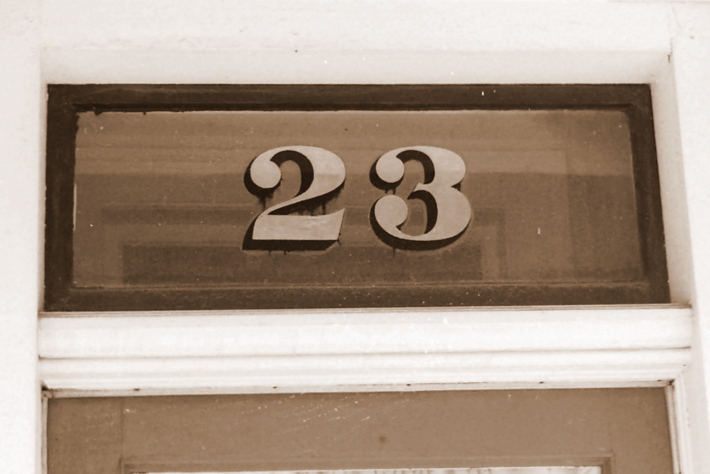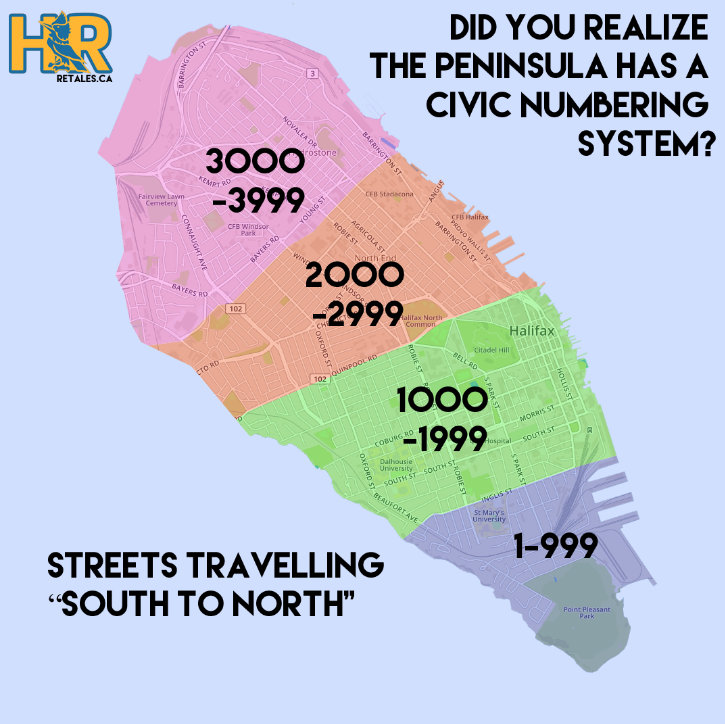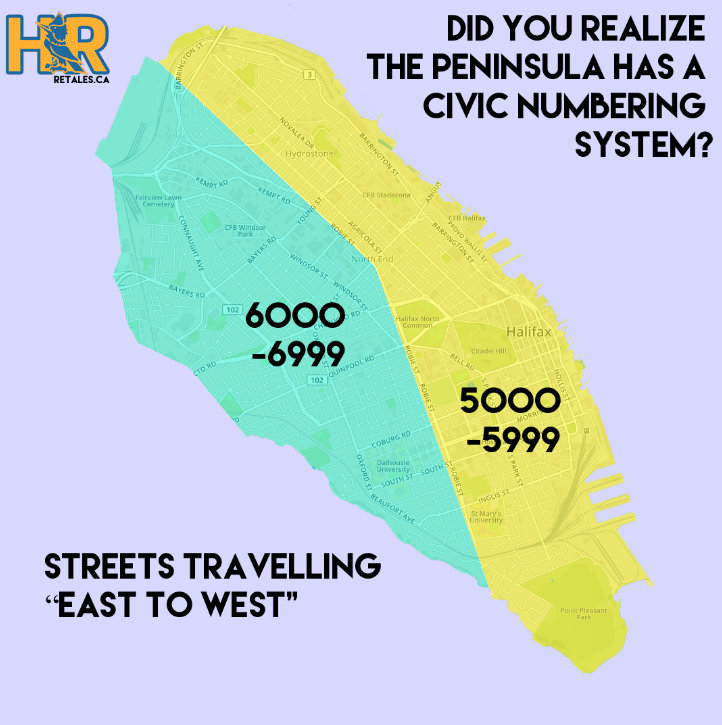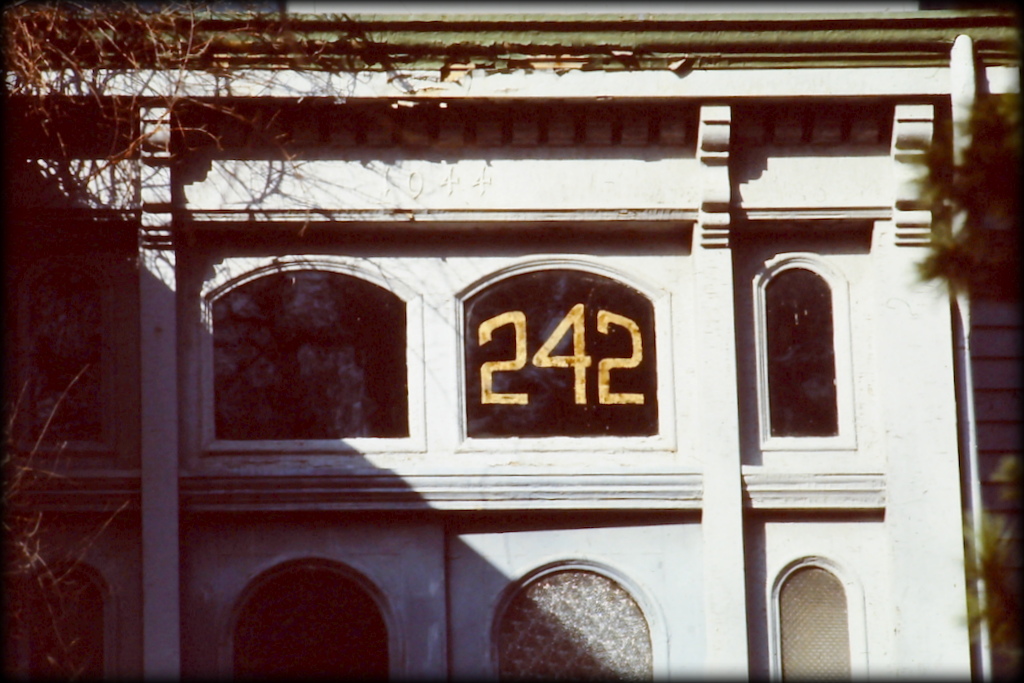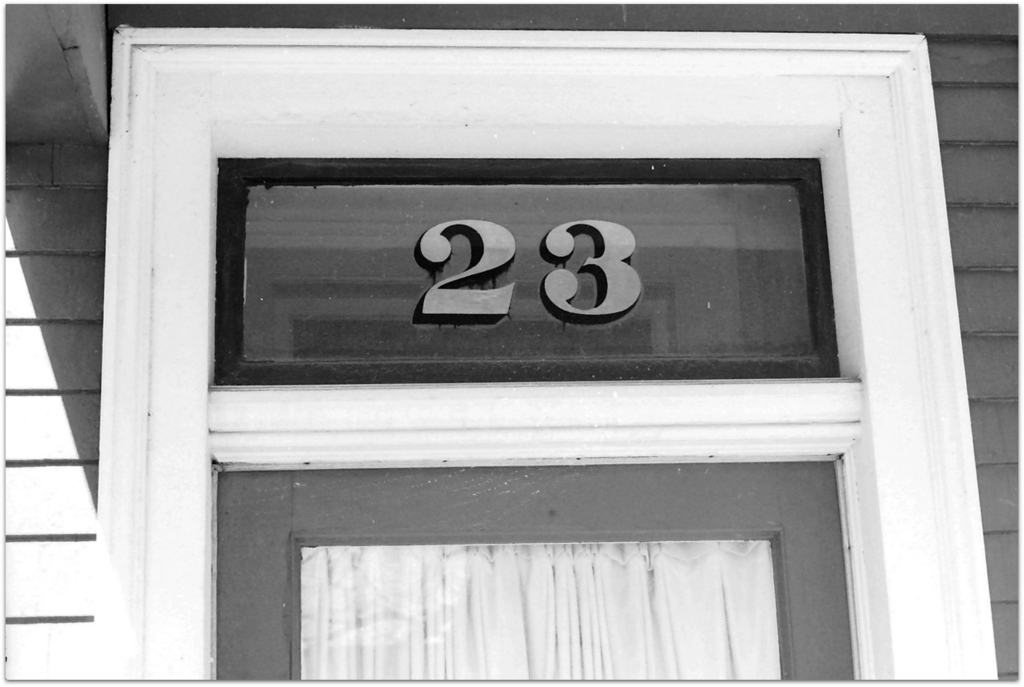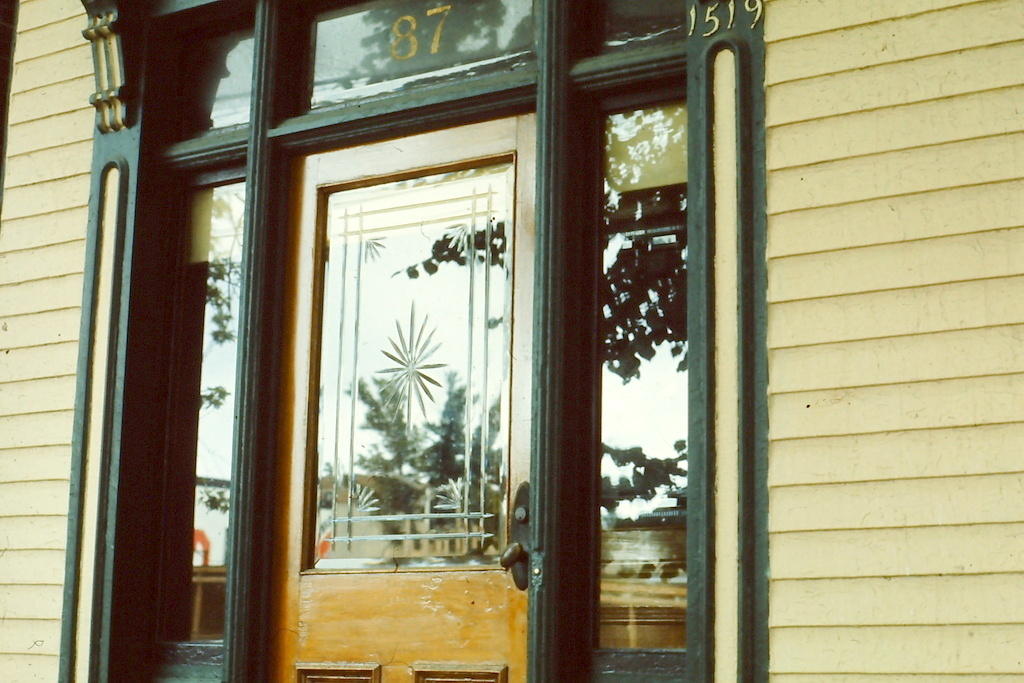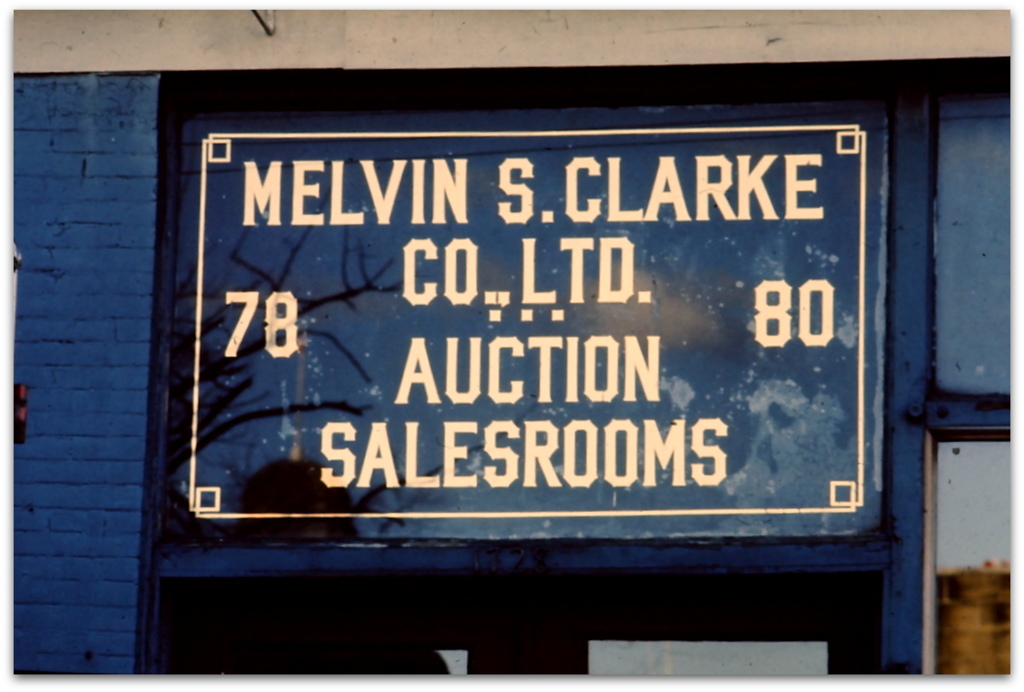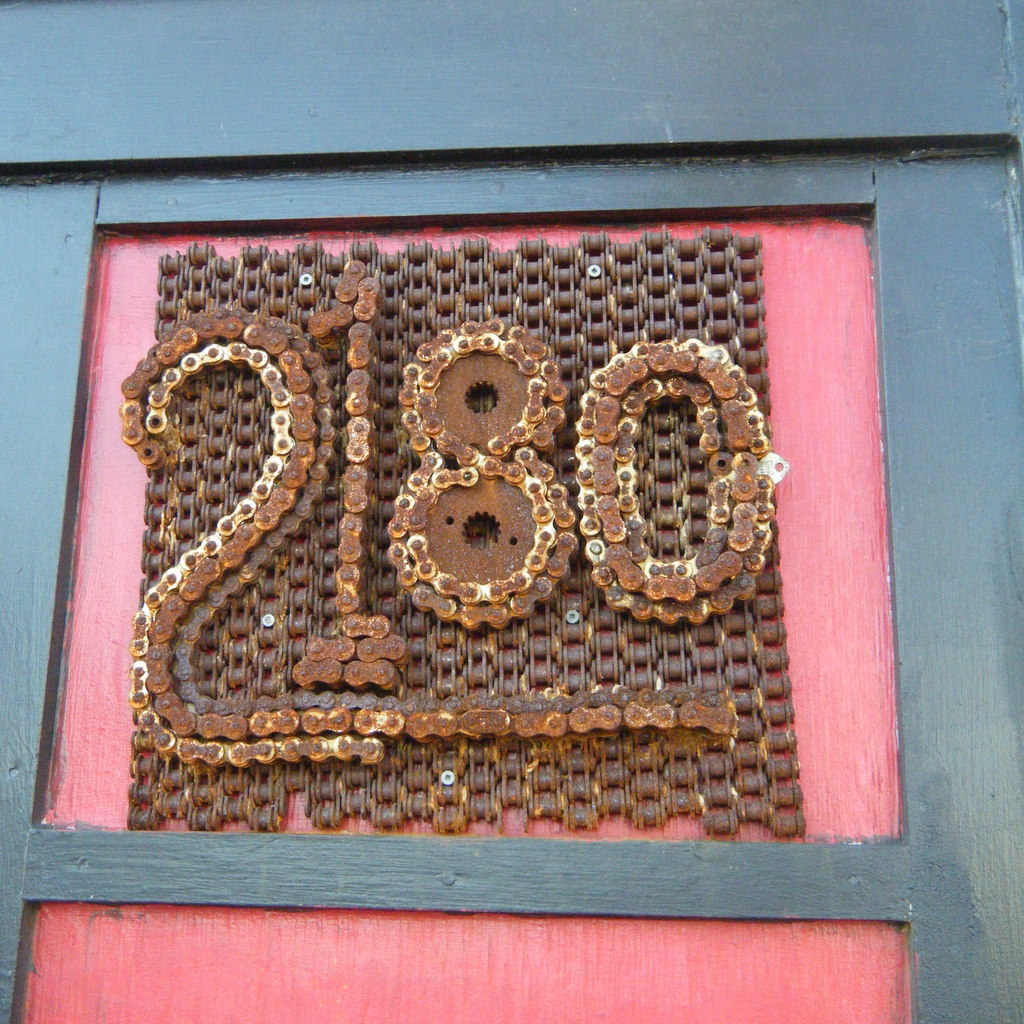It’s like a magic trick. Tell me your street number (on the peninsula of Halifax) and I know if you live on a east/west street or a north/south street. I also have a good idea what part of town you live in. Apparently not everyone knows this miracle of municipal organization, so recently @HalifaxReTales (chronicler of the ebb and flow of our retail ocean) produced a couple of handy maps to demonstrate how the system works.
This rational numbering grid was implemented in the early 1960s. When my family house changed from 56 Walnut Street to 1630 Walnut Street the new long number felt like a step towards modernity. Postal Codes were still far in the future as was the 911 system that ended the charming practice of having several streets with the same name.
These memories sent me looking for photos I’ve taken that contain examples of old house numbers. Reminders of earlier irrational times.
The transom over a front door made a good location for the number and often remained unchanged. A big Italianate-style house on Tower Road had the shapely 242. The bulbus 23 was also somewhere in the old South End. These photos were snapped in the 1970s.
Often old and new numbers were both displayed for years. The Craft Boutique on Spring Garden Road shows a number arrangement that made perfect sense to a Haligonian in 1970 when the photo was taken.
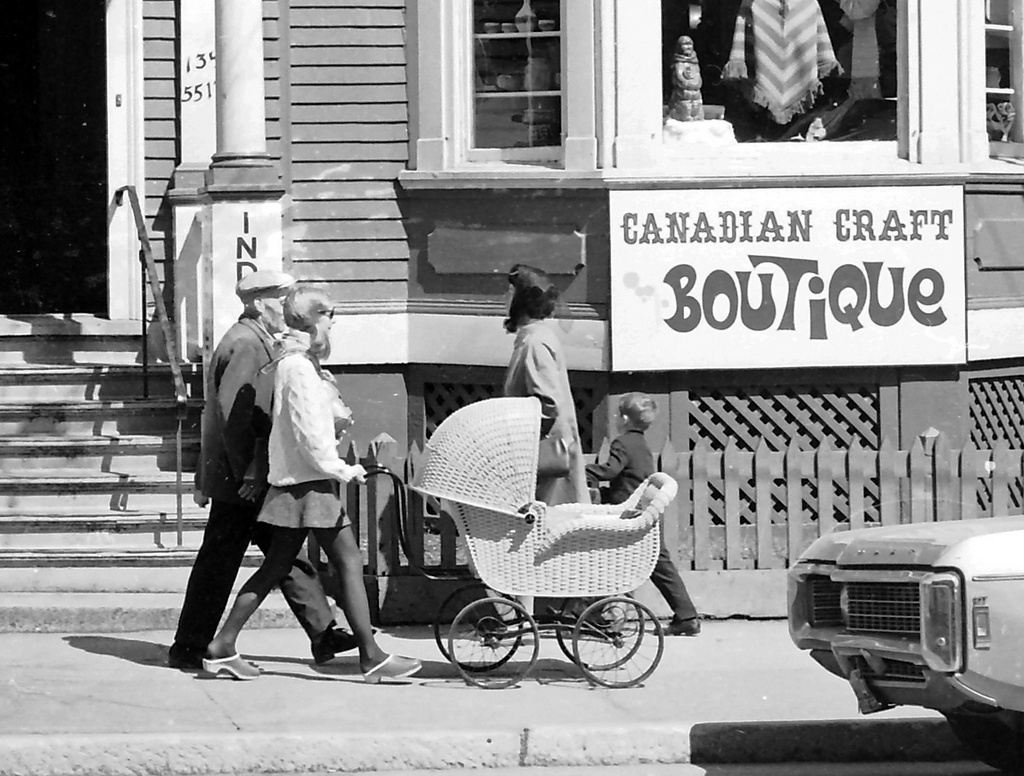
Around the corner on Dresden Row, this house was more or less where Pete’s is today. On old buildings the new long numbers were sometimes installed in awkward locations while the old number serenely endured. (I was really trying to photograph the door and probably hoping to crop out the ugly new number).
Melvin Clarke’s business on Argyle Street occupied two civic addresses. This is now the location of the Auction House restaurant. The new numbering system was based on a 15 foot grid so neighbouring buildings did not necessarily have consecutive numbers the way they did in Melvin’s day.
A number on Granville Street was uncovered for a short while before the building was disassembled.
If you ever need to know the old number for a building, the City makes it easy to find on a conversion list. They have also posted a helpful history of the civic numbering system with links to some of the original documentation.
So while you’re strolling the streets this summer keep an eye out for relics of the former numbering system. I recently noticed this etched glass beauty on Coburg Road.
Postscript
- In the 1970s Sheila restored one of the row houses on Smith Street. Her co-owner, architect Andy Lynch, hand cut vinyl numbers in an appropriate font to go in the transom. Catastrophe, her cat, was well known for sleeping in the middle of the short, dead end street.
- While you are looking for old numbers you’ll also be rewarded with fanciful new examples. These numerals, made of old bicycle chains, are for Plan B on Gottingen Street.
- Number gazing is an activity that can be practiced where ever you are. This example would have been comfortable in Ottoman Istanbul but I noticed it in New Glasgow.





